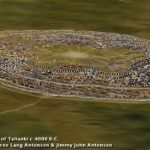Often survivalists wonder if they should be part of a collective or intentional community, or go solo (just immediate family).
More people with a range of skills is clearly better, but with more people trust diminishes, secrecy diminishes, and people wanting to run things or disagree increases.
I think at the most, unless you have amazing leadership skills and full control (owning everything), a handful of fully trusted known people is the limit.
Of course you can get to know your neighbours and local community without ever mentioning survivalism. This is good for life in general, and specifically when the SHTF, because trust, familiarity and friendship can be invaluable.
Take it a step further, and get like-minded people to live in the same locale. Like the Free State Project that urges libertarians to move to New Hampshire. Many like-minded people in a low-population place can affect politics and local laws, which in turns encourages more to turn up.
Locally (Victoria, Australia) I have looked through all the low-population areas with survivalist potential (basically, not desert) where the local council members are elected by ward (say a small town) instead of across the whole local government area evenly.
I found two:
Shire of Mansfield, 9,000 people, 4 wards, 5 councillors. That means perhaps 1,000 people in a rural area voting for one councillor.
Shire of Northern Grampians, 11,000 people, 4 wards, 7 councillors.
I’m not saying getting enough people to move there and vote you in would be easy or even possible. I’m saying these are the best places in Victoria to try. It can be a long-term, even multi-generational plan.
Even getting a dozen like-minded people to move there can make a big difference. If they work on networking and making friends, and speak sense instead of coming across as weird or crazy. At public meetings, just a handful of people in the crowd agreeing is noticeable and can influence change.
What changes? Key for me is planning laws, in an age where you need permission to do anything on your own land. Also, get some community SHTF planning happening – not hard if there is history of bushfires or floods (most have one or the other). Also, self-reliance, developing a culture of local produce and services. Schooling could perhaps be aligned with some aspects of self-determination.
In the long-term the idea of a local currency is possible.
How to start it? Be a voice in the self-sufficiency world (don’t mention survivalism) and talk up your location, and offer help/advice.




